With slow cookers, air fryers and pressure cookers offering low energy cooking solutions, suddenly turning on the oven can feel like a bit of an extravagance, especially if it is only to achieve a minimal result.
But along with your hob, an oven is the most likely piece of cooking equipment to find in a standard kitchen. Here’s how it can be used efficiently in terms of space by rotating and cooking multiple vegetables at the same time.
The aim was not to cook a singular dish but prepare a range of veg ahead of time, ready to go into future dishes or streamline recipes that would require a single roasted element.
Incidentally, this is also the principle on which most restaurant kitchens work. Items are prepared ahead of time, so dishes can be built with more speed during a busy service.
Think of it like batch cooking as a jumping off point for your weekly menu – saving time and ensuring delicious veg are ready to go during your busy midweek.
Method
We took eight oven-friendly veg to represent average items in a shopping basket or veg box delivery.
Set a time limit of an hour, based on the item that would likely take the longest, and a temperature of 200˚C/180˚C fan/ Gas mark 6 to achieve soe decent colour and deep roasted flavours. We allowed a modest 5 min preheat.
Run the oven for a full hour and take out the veg according to their cooking times below, replacing with others down the list. Store cooked veg in the fridge until ready to use.
Beetroot – 1 hour
The timer by which the whole experiment was set. Baked whole in a snug fitting oven dish and done when tender to a knife tip. Cool and keep in the fridge until needed; ready to thumb away the skins and slice into a salad or as the backbone of a delectable dip.
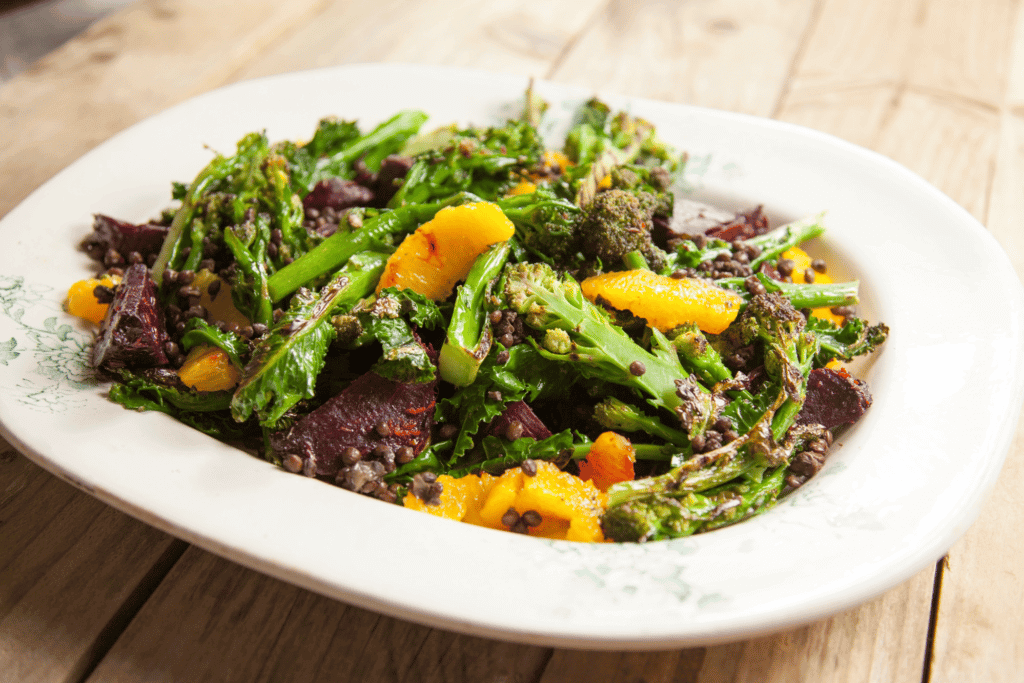
Butternut squash – 25-30 mins
Peeled, diced, oiled and seasoned. You could get fancy with the herbs and spices depending on the final destination. Can be added to pasta, risottos, soups, stews or even salads with its distinct oven-roasted depth.
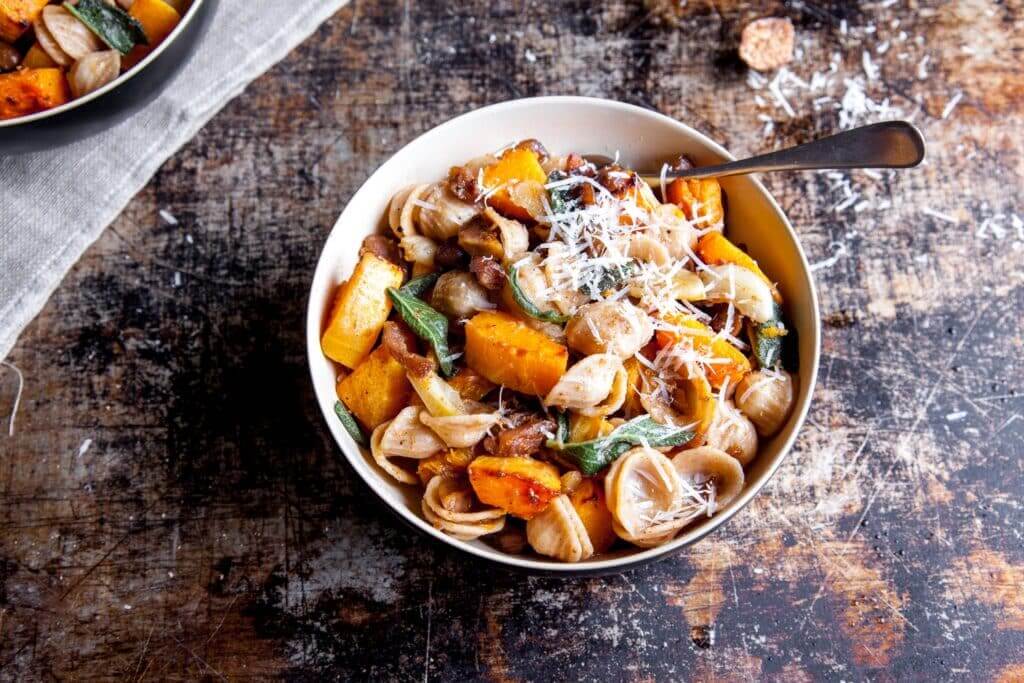
Red onions – 45 mins
Cooked in their skins to achieve meltingly soft centres, They’ll look a mess but once you discard the burn skins you’ll have sweet, soft and endlessly useful flesh.
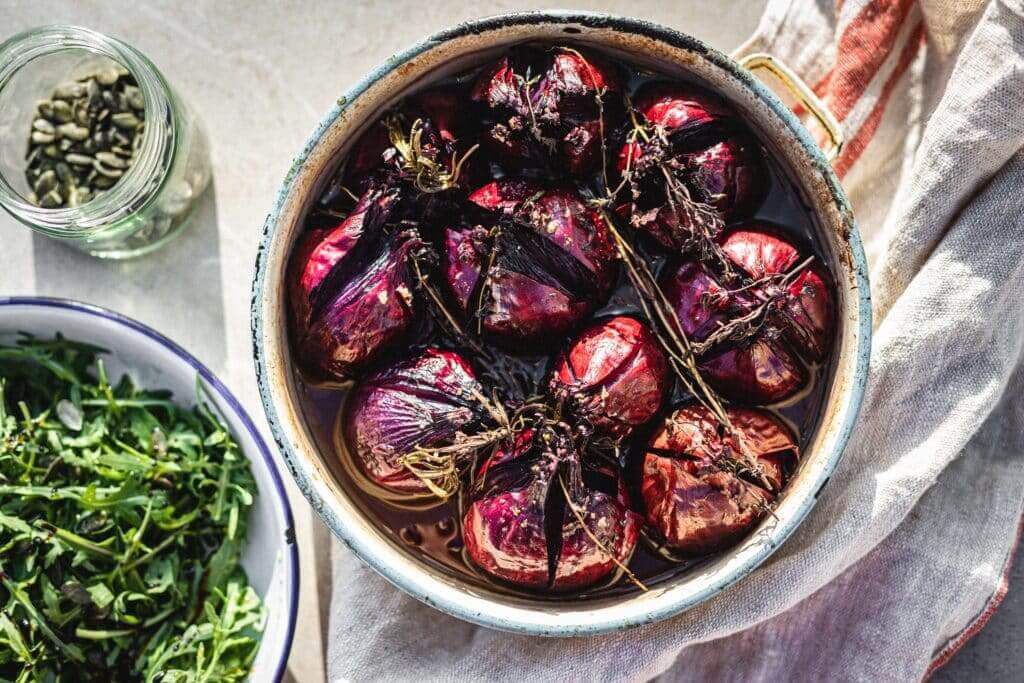
Red peppers – 25 mins
Roasted directly on the shelf until collapsed, blackened and blistered. Great for filling the awkward gaps between trays and dishes. Discard the seeds and skin and use the soft sweet flesh in all types of sauces, stews and dips.
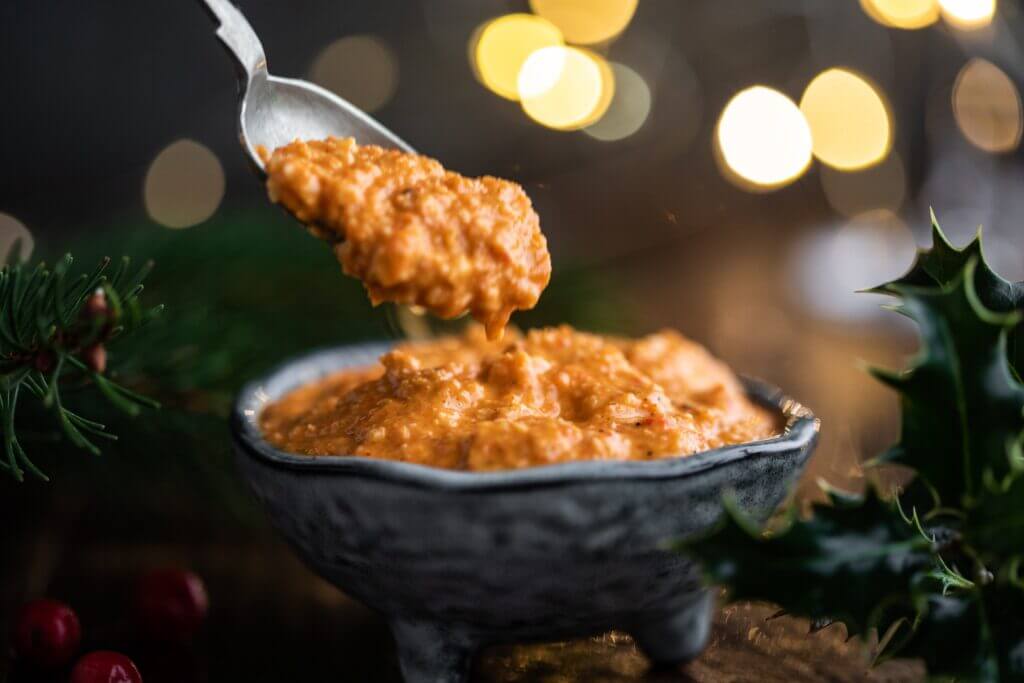
Tomatoes – 20-25 mins
Halved and simply roasted in a small tray with oil, salt and a dash of balsamic, the heat intensifies the sweetness. Store in oil and use as antipasti, ally them with scrambled eggs for breakfast, or use them as the base of a quick pasta sauce – the options are endless.
Portobello mushrooms – 25-30 mins
Mushrooms love the intense heat of an oven. A slather of miso, soy or harissa would all be worth consideration, as would a heroic knob of garlic butter. Fold into veggie dishes for some umami flavour and meat-like texture.
Cauliflower – 20 mins
No refinement or delicate presentation here as they are cut into clumsy slices, allowing plenty of surface area and contact with the roasting tray to get maximum colour. They slide into the space left by the butternut.
Curly kale – 7-8 mins
A cheeky tray of crispy kale snuck in at the end in the space left by the peppers and tomatoes. A hackneyed hipster trick maybe, but the crisp, mineral saltiness is a perennial winner and was snaffled before the rest of the veg has barely begun to cool.
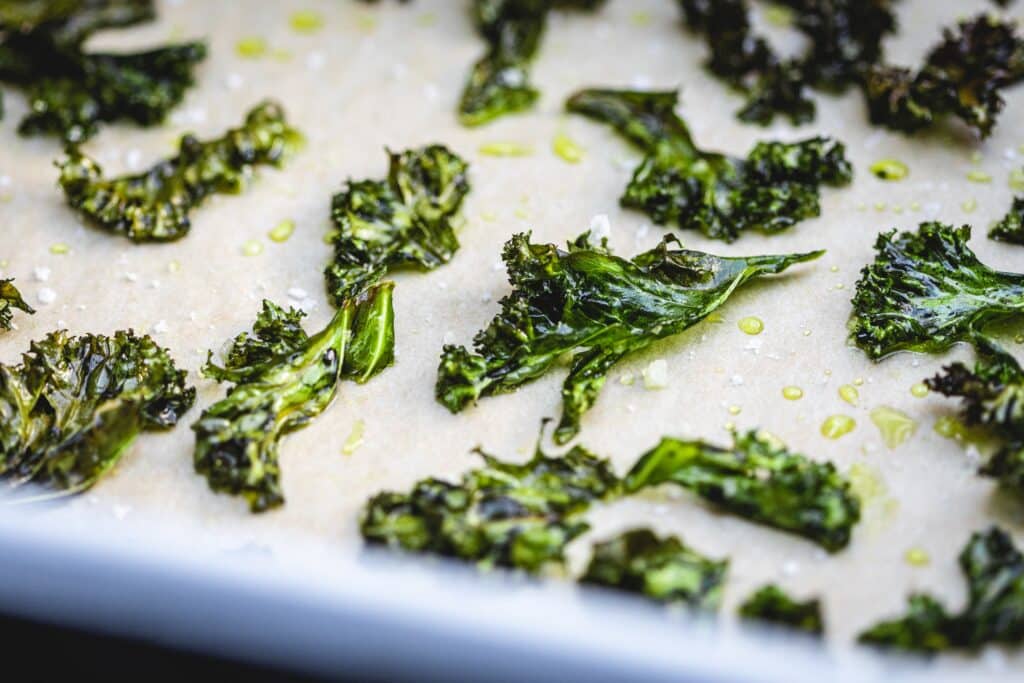
Tips
The top of the oven tends to be the hottest and the area most likely to get good colour, although you may already know any quirks and hotspots particular to your oven.
Having a good size range of oven dishes and roasting trays really helps. Some items like peppers and aubergines can cook directly on the oven shelves. Don’t be afraid of letting different veg share the same tray.
Plan the space. We took the oven shelves out before turning the oven on and puzzled on how best to position everything to optimal effect.
Not everything has to go in at once, have some items ready to go in as others come out and rotate things around to keep the shelves full.

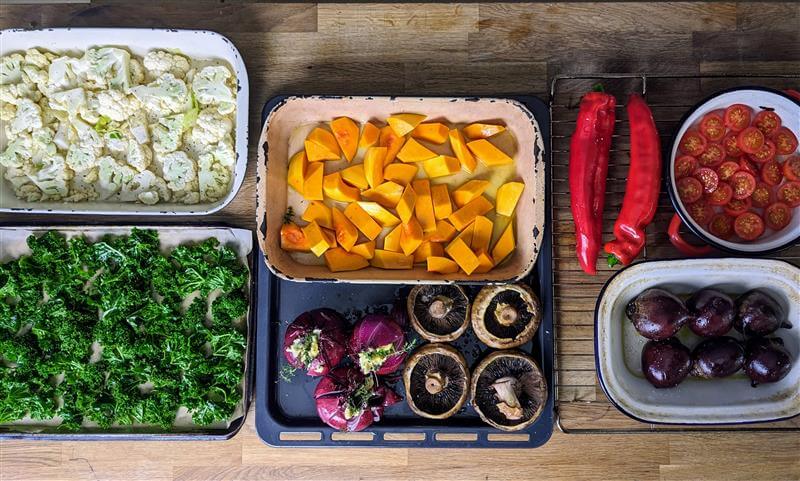

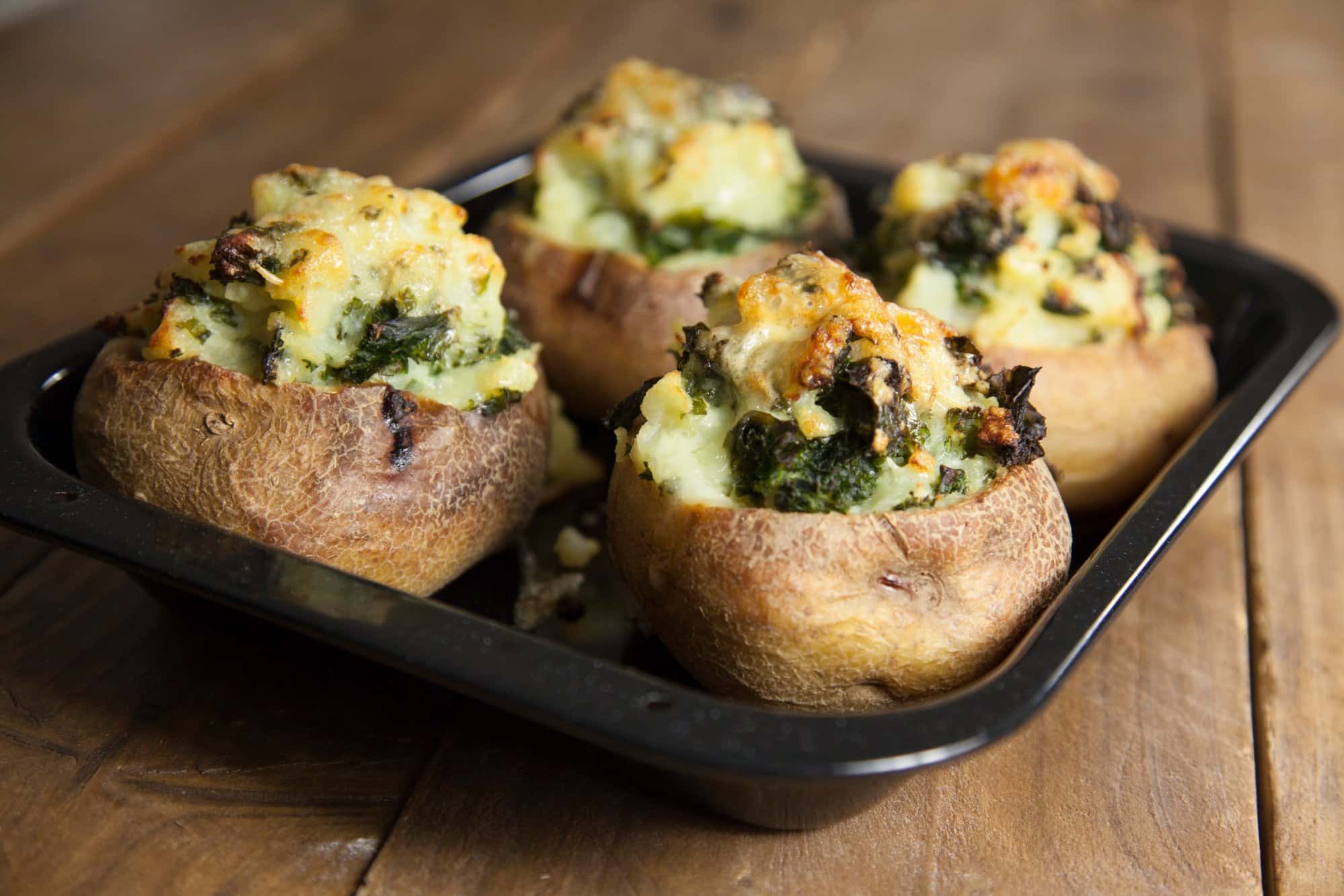
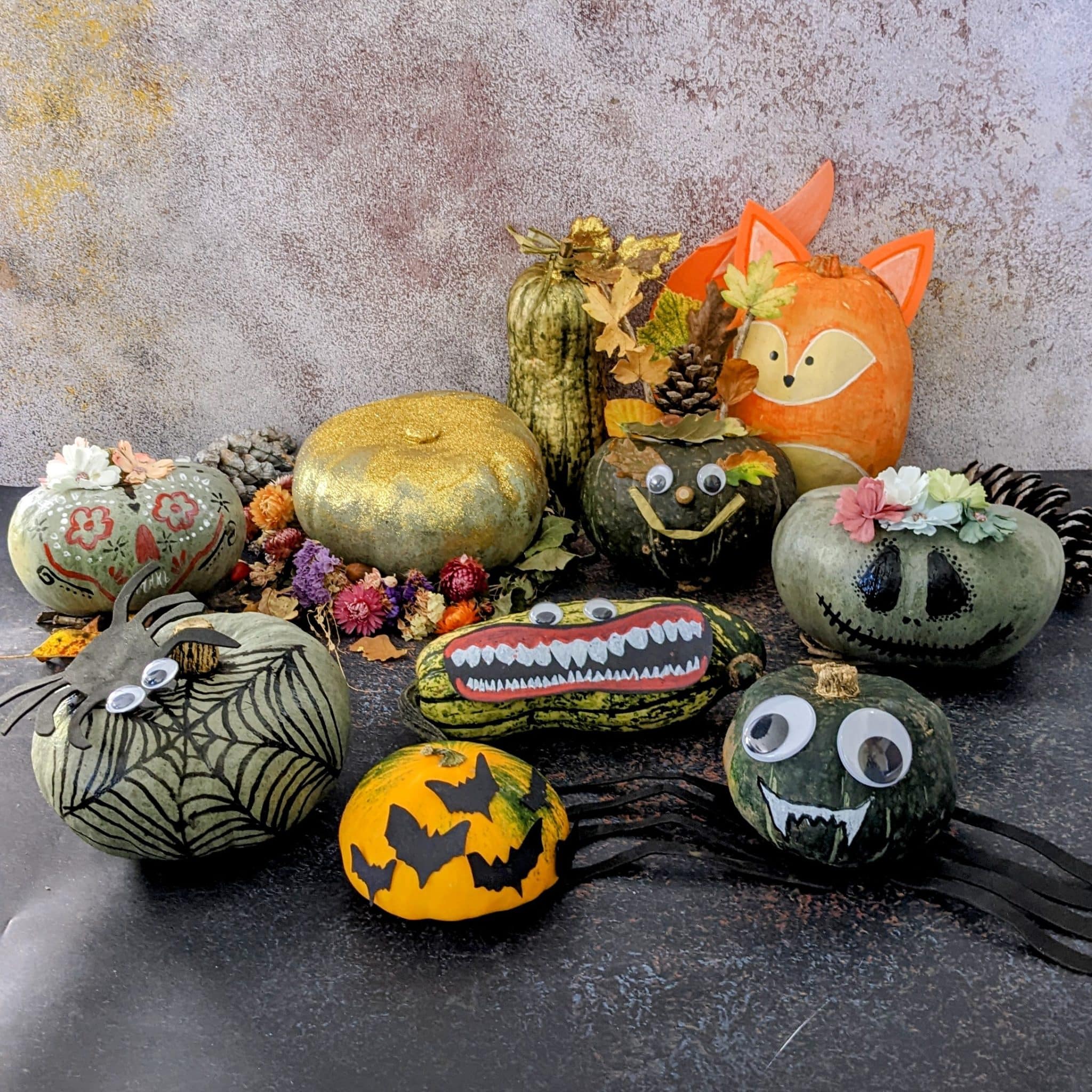
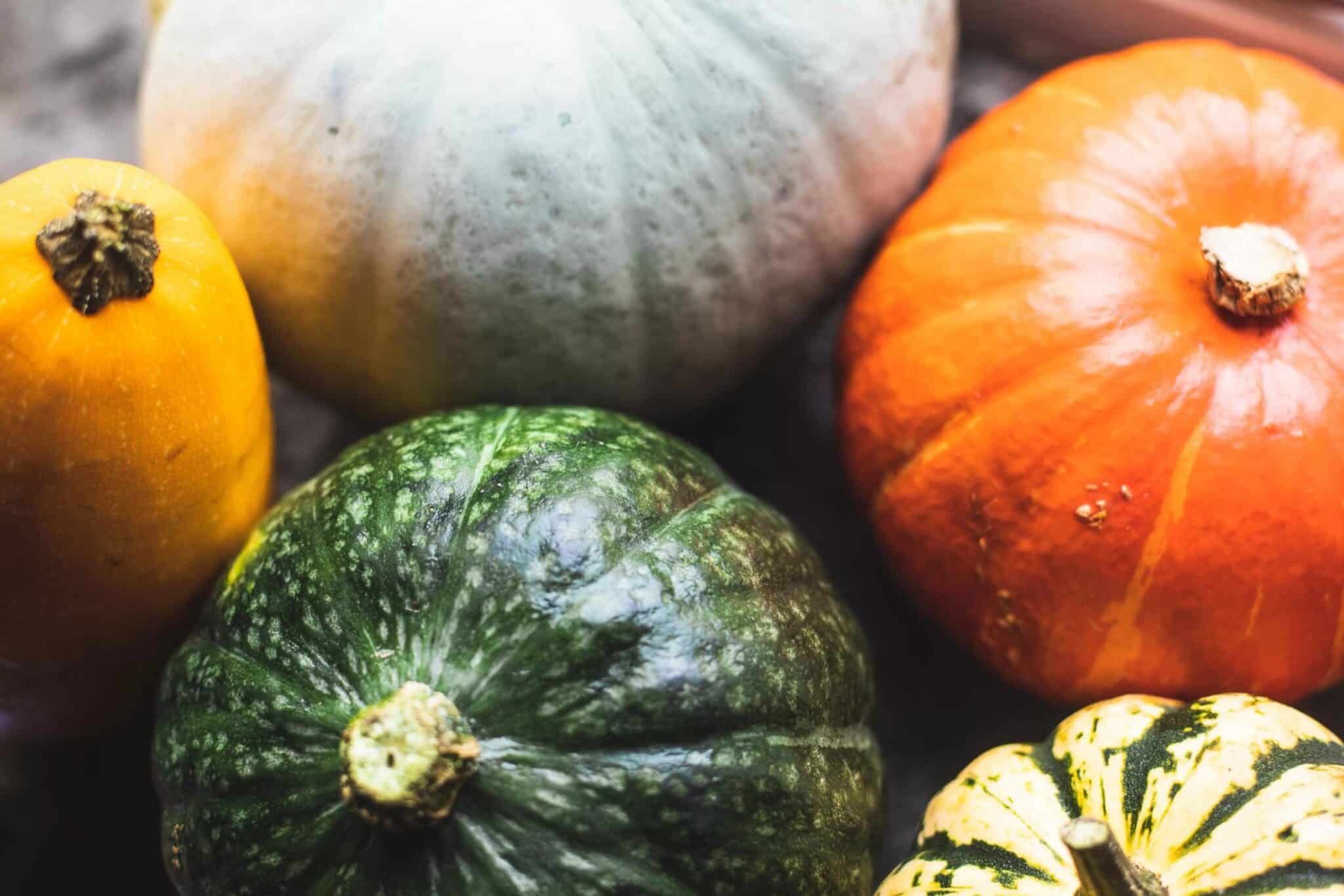










Thinking of giving this a try, not just to save on energy costs but to speed up meals and ensure my veggies are still ‘fresh’ by the end of the week but how am I best storing everything? I know I can place some in the fridge but will they still be useable by the end of the week? I’m never sure about storing leftovers other than freezing
Hi Sarah, thanks for your comment. I checked with chef Bob on this and his reply is as follows: ‘If cooled well and stored in an airtight container they’d probably all be good in the fridge for 4-5 days. The beetroots if left in their skins will probably be fine for a week.’
freezing will be fine and extend storage time
There is a fallacy here.
I cooked a pork dish that required three or more hours.
The energy used to heat the oven is not wasted. It warms the kitchen. On the other hand a different story in the summer.